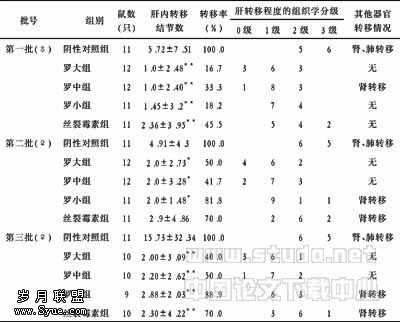老年人永久性房颤的抗凝治疗循证医学进展
作者:李艳兵,戚龙,温国政,潘永良,张洪存,焦春敬,李京芬
【关键词】 老年;房颤;抗凝
[摘要] 随着人口的老龄化及房颤发病率的上升,心源性缺血性卒中事件的发生已经成为老年人的死亡率、住院率上升和生活质量下降的比较重要的影响因素。本文综述了近年国际上关于永久性房颤病人的抗凝的临床试验。
[关键词] 老年;房颤;抗凝
[Abstract] The prevalence of atrial fibrillation is increasing following aging population. Its a important factor to effect elders condition,including the morbidity,mortality and quality of life for the elders with atrial fibrillation because of cardiovascular thromboembolic events. This article has reviewed the clinical trials regarding to anticoagulant therapy for the old patients with atrial fibrillation.
[Key words] elder;atrial fibrillation;anticoagulant therapy
房颤(atrial fibrillation,AF)是常见的持续性心律失常。总发病率为1%~1.5%,但是其随年龄的增长而增加,超过70岁的老年人的发病率为10%[1]。美国心脏病学会/美国心脏病协会/欧洲心脏病协会(ACC/AHA/ESC)在2001年联合制定并发表的房颤治疗指南中将房颤分为阵发性房颤(paroxysmal atrial fibrillation)、持续性房颤(persistent atrial fibrillation)、永久性房颤(permanent atrial fibrillation)[2]。所谓阵发性房颤是指能够自行终止的房颤,持续性房颤是指不能自行终止但可以通过医疗行为干预而转复为窦性心律的房颤,永久性房颤是指既不能自行终止也不能转复为窦性心律的房颤。房颤的持续存在使缺血性脑卒中和全身栓塞事件的发生显著增加。与窦性心律的人群相比,患有房颤的病人发生卒中的风险增加了6倍,死亡的风险增加了2倍,那些有风湿性心脏病的患者发生卒中的风险增加18倍[3]。老年人有更高的血栓栓塞风险,超过50%的房颤病人年龄大于75岁[4]。在Framingham研究中,由于房颤而发生栓塞事件的几率50~59岁同80~89岁的病人相比为1.5%比23.5%[3]。且房颤的病人比没有房颤的病人发生卒中后死亡率高、住院时间长、致残率高[5]。许多权威的心脏病学专业组织(ACC/AHA/ESC/CCS)对房颤患者进行了危险分层:(1)高危:高龄(大于75岁)、有脑卒中史或TIA发作史、高血压、中重度左心衰、二尖瓣狭窄、瓣膜修补术后,具备上述之一。(2)中危:年龄在65~75岁、糖尿病、冠状动脉病(CAD),具备上述之一。(3)低危:无高、中危险因素[6~8]。对于房颤病人应用抗凝药物就要根据患者的年龄、并发症、心功能状态及并存的危险因素来进行选择。美国心胸内科医生协会(ACCP)第7次会议[9]对房颤患者的抗凝治疗的药物选择推荐为:(1)年龄小于65岁低危永久性房颤病人,选用阿司匹林或不需抗凝治疗;(2)65~75岁不合并其他危险因素的永久性房颤病人选用阿司匹林;(3)合并中、高危险因素的永久性房颤病人选用华法林。下面就各种药物的临床应用进展做一综述。
1 阿司匹林
国外6项试验荟萃分析表明,与不抗血栓治疗比较,阿司匹林对于预防房颤患者栓塞事件的发生率降低了21%[2],对于房颤患者栓塞事件的预防只有中等的保护作用,疗效不像华法林那样可靠,但阿司匹林对伴有高血压和糖尿病的房颤患者具有较好的保护作用[10,11]。但是在AFASAK试验、BAATAF试验和EAFT试验中[12~14],房颤病人所用阿司匹林剂量为75mg/d,显示脑卒中的发生率与安慰剂组比较差异无显著性。SPAFI所用阿司匹林剂量为325mg/d,结果显示阿司匹林使血栓栓塞事件的发生率降低42%[15]。由此可见,对于房颤病人应用阿司匹林剂量的选择尤为重要。因此,对于单纯房颤病人(低危人群),1年内发生栓塞的比例为1%,这些病人很少能从抗凝治疗中获得益处[16],建议这样的病人在没有禁忌证的情况下选用阿司匹林抗凝,剂量为325mg/d。同时,对于占房颤患者的40%有中、高危险因素但有华法林应用禁忌证的病人也可以选择阿司匹林进行抗凝治疗。
2 华法林
华法林是一种最常用的口服抗凝剂。回顾性荟萃分析显示华法林能将非瓣膜病性房颤患者脑卒中的发生率从4.5%下降到1.4%[2]。心房颤动患者选用华法林进行抗凝治疗同安慰剂组比较使发生血栓栓塞的危险性降低61%[17]。而华法林与阿司匹林比较,应用华法林者发生脑卒中的危险性比应用阿司匹林者下降约30%~48%[13]。在SPAF Ⅱ研究中,将阿司匹林和华法林预防缺血性脑卒中的作用进行比较,结果显示,尽管华法林治疗效果优于阿司匹林,但出血并发症的发生率也增加[18]。但此试验将国际标准化比值(INR)调定范围定在2.0~4.5。在SPAF Ⅲ研究中[19],华法林调定剂量将国际标准化比值(INR)调定范围定在2.0~3.0,则主要出血事件同阿司匹林组无明显统计学差异。两项将INR范围规定在1.4~2.8(平均INR为2.0~2.1)的随机试验,发现发生缺血性栓塞的相对危险性大幅下降。在一项曾经出现过脑卒中或TIA的病人中将INR 2.2~3.5同INR 1.5~2.1相比发现,主要的出血事件随抗凝强度的增加而增加[20]。因此,对于永久性房颤病人选择一个合适的最小剂量的抗凝方案既能达到最好的预防缺血性卒中的发生,同时又能将出血的发生率降低到最低是非常重要的。一些欧美国家的治疗指南认为在房颤的病人中能对缺血性卒中起到最大的保护作用的抗凝标准为INR在2.0~3.0之间[21~24]。但是,随着年龄的增长,这样的标准是否合适呢?同样在SPAF Ⅱ研究中,一组平均80岁的老年房颤患者,应用华法林调定剂量预防卒中事件,INR为2.6,其年颅内出血率达到了1.8%[18]。由此可见,>75岁的老年人对于华法林的敏感性增加不但体现在出血的风险增加,还表现在同样的INR水平,老年人获得的实际抗栓水平更高,因此可以考虑将华法林剂量调整INR为1.6~2.5是合理的[2]。
对于房颤的病人,临床上还做了相关华法林联合阿司匹林预防缺血性卒中事件的试验,结果显示较低剂量的抗凝(INR小于1.5)合用阿司匹林同阿司匹林相比较预防卒中的发生仅有较小的保护作用[21],阿司匹林联合较高的抗凝强度的口服抗凝剂可以显著地增加颅内出血的发生,尤其在老年人群的房颤病人[25]。因此对于房颤病人预防缺血性卒中事件的发生仍然推荐口服调整剂量的华法林。
但是,几项回顾性分析显示华法林的临床应用非常不足[26,27]。主要原因为华法林的治疗窗窄,同很多食物和药物有相互作用,需要的监测INR。若能加强对病人的健康,提高家庭自我抗凝监测的普及,将极大地降低房颤病人缺血性卒中事件的发生。
3 低分子肝素(LMWH)
LMWH具有皮下注射吸收完全、生物利用度高(>80%)、半衰期较长、副作用小和一般不需要实验室监测凝血指标等优点。这些优点可简化紧急情况下AF的治疗,可缩短住院时间或不需要住院即可开始抗凝治疗。在机械瓣置换术后的AF病人;在高危病人或一系列需停服抗血栓药1周以上时;或院外自行抗血栓治疗时,可应用LMWH。但由于其操作复杂和价格偏高因此不便于永久性房颤病人的长期抗凝治疗。
4 直接凝血酶抑制剂(ximelagatran)
melagatran是人α凝血酶有力的、能够迅速结合的竞争性抑制剂,既能抑制凝血酶的活性,又能抑制凝血酶的产生[28]。ximelagatran是melagatran的前体,是一种口服有效的直接凝血酶抑制剂(direct thrombin inhibitor,DTI),口服给药后,快速吸收并进行广泛生物转化,经两种中间体(乙基melagatran和羟基melagatran)转化为活性形式melagatran[29]。
在包括了来自欧洲、亚洲和大洋洲23个国家259个中心的3410例患者的SPORTIFⅢ试验中[30],将华法林(INR 2~3)同ximelagatran(36mg,2次/d)在预防血栓栓塞方面进行了比较,平均随访时间为17.4个月,结果显示主要终点事件(脑卒中率或体循环栓塞事件)在华法林和ximelagatran之间没有差别(华法林56例2.3%每年;ximelagatran40例,占1.6%每年),严重和轻微出血的合并发生率在ximelagatran组明显低于华法林组(475个事件比554个事件,P=0.007)。包含了3922例NVAF患者的SPORTIFⅤ试验中[31],结果显示,主要终点事件(脑卒中率或体循环栓塞事件)两组比较差异没有显著性(ximelagatran为1.6%每年,华法林为1.2%每年),严重和轻微出血的合并症年发生率在ximelagatran组明显低于华法林组(37%比47%;P<0.0001)。把SPORTIF Ⅲ和SPORTIF Ⅴ的资料合在一起分析,在预防血栓栓塞方面ximelagatran不亚于华法林,主要终点事件、严重出血和死亡的合并发生率在ximelagatran组明显低于华法林组,相对危险的降低总计达16%。
虽然ximelagatran具有有效浓度范围相对宽、起效迅速、同其他药物相互作用的可能性小(没有食物影响药效的资料)、不需要调整剂量、不需要抗凝检测等优点,但在SPORTIF V试验中,6%应用ximelagatran的患者有肝脏酶学(ALT)升高达正常上限3倍,尤其是在第2和第6个月,因此需要肝功能检测,部分抵消了不需抗凝检测的益处。ximelagatran能否完全取代华法林目前尚不能定论,有待于样本量更大、观察时间更长的临床资料。
虽然目前对于房颤病人采取射频消融的方式进行的研究已经有了比较长足的进展[32]。但仍存在手术费用高、易复发等特点,因此仍然有绝大多数病人需要长期坚持口服抗凝治疗以预防栓塞事件的发生。为提高永久性房颤病人的生活质量及生存率,减少住院率及病死率,加强口服抗凝治疗的应用是十分必要的,但是对于不同病人的抗凝方案的选择需要对每个房颤病人进行个体化评估[33]。
[]
1 Steve Goodacre,Richard Irons. ABC of clinical electrocardiography: atrial arrhythmias.BMJ,2002,324:594-597.
2 Fuster V,Ryden LE,Asinger RW,et al. ACC/AHA/ESC guidelines for the management of patients with atrial fibrillation: a report of the American college of cardiology/American heart association task force on practice guidelines and the European society of cardiology committee for practice guidelines and policy conferences (committee to develop guidelines for the management of patients with atrial fibrillation) developed in collaboration with the North American Society of Pacing and Electrophysiology. Eur Heart J,2001,22:1852-1923.
3 Wolf PA,Abbott RD,Kannel WB. Atrial fibrillation as an independent risk factor for stroke: the Framingham study. Stroke,1991,22:983-988.
4 Consensus conference on atrial fibrillation in hospital and general practice. Final consensus statement. Proc R Coll Physicians Edinb,1999,(suppl 6):2-3.
5 M Bilal Iqbal,Anil K Taneja,Gregory Y H Lip,et al. Recent developments in atrial fibrillation. British Medical Journal,2005,330:238-243.
6 Connolly Sj,Turpie AGC. Antithrombotic therapy in atrial fibrillation:CCS consensus conference on atrial fibrillation. Can J Cardiol,1996,12:17-20.
7 Fuater V,Ryden LE,Asinger RW,et al. ACC/AHA/ESC guidelines for the patients with atrial fibrillation:executive summary. J Am coll Cardiol,2002,38:1231-1265.
8 Albers GW,Dalen JE,Laupacis A,et al. Antithrombotic therapy in atrial fibrillation. Chest,2001,119:194-206.
9 Singer Daniel E,Albers Gregory W,Dalen J E,et al. Antithrombotic therapy in atrial fibrillation the seventh ACCP conference on antithrombotic and thrombolytic therapy. Chest,2004,126:429S-456S.
10 The atrial fibrillation investigators. The efficacy of aspirin in patients with atrial fibrillation: analysis of pooled data from 3 randomized trials. Arch Intern Med,1997,157:1237-1240.
11 Munger TM,Packer DL,Hammill SC,et al. A population study of the natural history of WolffParkinsonWhite syndrome in olmsted county,Minnesota,19531989. Circulation,1993,87:866-873.
12 Petersen P,Boysen G,Godtfredsen J,et al. Placebocontrolled,randomized trial of warfarin and aspirin for prevention of thromoembolic complications in chronic atrial fibrillation:the Copenhagen AFASAK study.Lancet,1989,1:175-179.
13 The boston area anticoagulation trial for atrial fibrillation investigators. The effect of lowdose warfarin on the risk of stroke in patients with nonrheumatic atrial fibrillation. N Engl J Med,1990,323:1505-1511.
14 EAFT(European atrial fibrillation trial) study group. Secondary prevention in nonrheumatic atrial fibrillation after transient ischemic attack or minor strike. Lancet,1993,342:1255-1262.
15 Stroke prevention in atrial fibrillation study group investigators. Stroke prevention in atrial fibrillation study. Final results. Circulation,1991,84:527-539.
16 Haissaguerre M,Jais P,Shah DC,et al. Spontaneous initiation of atrial fibrillation by ectopic beats originating in the pulmonary veins. N Engl J Med,1998,339:659-966.
17 Hirsh J,Dalen J,Anderson DR,et al. Oral anticoagulants: mechanism of action,clinical effectiveness,and optimal therapeutic range. Chest,2001,119 ( Suppl1): 8221.
18 Stroke prevention in atrial fibrillation investigators. Warfarin versus aspirin for prevention of thromboembolism in atrial fibrillation:stroke prevention in atrial fibrillation Ⅱ study. Lancet,1994,343:687-691.
19 Cowburn P,Cleland JGF. Stroke prevention in atrial fibrillation Ⅲ study. Eur Heart J,1996,17:11-19.
20 Minematsu K,Yasaka M,Yamaguchi T. Optimal intensity of warfarin therapy for secondary prevention of stroke in patients with nonvalvular atrial fibrillation: a prospective,randomized,multicenter trial. Stroke,1999,30:241.
21 Stroke prevention in atrial fibrillation investigators adjusteddose warfarin versus lowintensity,fixeddose warfarin plus aspirin for highrisk patients with atrial fibrillation: stroke prevention in atrial fibrillation Ⅲrandomised clinical trial. Lancet,1996,348:633-638.
22 Hylek EM,Skates SJ,Sheehan MA,et al. An analysis of the lowest effective intensity of prophylactic anticoagulation for patients with nonrheumatic atrial fibrillation. N Engl J Med,1996,335:540-546.
23 The European Atrial Fibrillation trial study group. Optimal oral anticoagulant therapy in patients with nonrheumatic atrial fibrillation and recent cerebral ischemia. N Engl J Med,1995,333:5-10.
24 Kalra L,Yu G,Perez I,et al. Prospective cohort study to determine if trial efficacy of anticoagulation for stroke prevention in atrial fibrilla tion translates into clinical effectiveness. BMJ,2000,320 (7244): 1236-1239.
25 Hart RG,Benavente O,Pearce LA. Increased risk of intracranial hemorrhage when aspirin is combined with warfarin: a metaanalysis and hypothesis. Cerebrovasc Dis,1999,9:215-217.
26 McCrory DC,Matchar DB,Samsa G. Physician attitudes about anticoagulation for nonvalvular atrial fibrillation in the elderly. Arch Intern Med,1995,155:277-281.
27 Gage BF,Boechler M,Doggette AL,et al. Adverse outcomes and predictors of underuse of antithrombotic therapy in Medicare beneficiaries with chronic atrial fibrillation. Stroke,2000,31:822-827.
28 Gustafsson D,Elg M. The pharmacodynamics and pharmacoki netics of the oral direct thrombin inhibitor ximelagatran and its active metabolite melagatran: a minireview.Thromb Res,2003,(Suppl 1):9-15.
29 Hopfner R. Ximelagatran (AstraZeneca).Curr Opin Inves tig Drugs,2002,3:246-251.
30 Executive Steering Committee on behalf of the SPORTIF Ⅲ investigators. Stroke prevention with the oral direct thrombin inhibitor ximelagatran compared with warfarin in patients with nonvalvular atrial fibrillation ( SPORTIF Ⅲ): randomized controlled trial. Lancet,2003,362:1691-1698.
31 Halperin JL,Executive steering committee.SPORTIF Ⅲ and Ⅴ Study Investigators. Ximelagatran compared with warfarin for prevention of thromboembolism in patients with nonvalvular atrial fibrillation: rationale,objectives,and design of a pair of clinical studies and baseline patient characteristics (SPORTIF Ⅲ and V). Am Heart J,2003,146:431-438.
32 戚龙,王浩宇.治疗心房颤动选择消融部位的研究现状.心脏起搏与心电生理杂志,1999,13(3):162-163.
33 Hart RG,Halperin JL. Atrial fibrillation and thromboembolism: a decade of progress in stroke prevention. Ann Intern Med,1999,131:688-695.











